VW's Diesel Defeat Devices Finally Located, Cracked Wide Open
This article by Joel Hruska for EmtremeTech may be of interest to subscribers. Here is a section:
But making those rules public does have a downside: It means companies know precisely how to cheat. Here’s how the Jacobs School describes the situation:
During emissions standards tests, cars are placed on a chassis equipped with a dynamometer, which measures the power output of the engine. The vehicle follows a precisely defined speed profile that tries to mimic real driving on an urban route with frequent stops. The conditions of the test are both standardized and public. This essentially makes it possible for manufacturers to intentionally alter the behavior of their vehicles during the test cycle. The code found in Volkswagen vehicles checks for a number of conditions associated with a driving test, such as distance, speed and even the position of the wheel. If the conditions are met, the code directs the onboard computer to activate emissions curbing mechanism when those conditions were met.
But VW didn’t stop there. The researchers who examined Volkswagen’s work pulled 964 separate versions of the Engine Control Unit (ECU)’s code from various makes and models of Volkswagens. In 400 of those cases, the ECU was programmed with defeat devices.
Now, you might be thinking that a single code model couldn’t possibly compare all the variables in play between various test facilities, and that some cars should have shown a fault simply due to random chance. But VW was aware of that possibility and took steps to prevent it. Their defeat device had ten separate profiles to allow it to detect various permutations in test scenarios.
Not all the defeat devices were sophisticated. The Fiat 500X (not manufactured by VW) has a much simpler defeat device. The vehicle’s emission control system runs for 26 minutes and 40 seconds after you first start the car, period. That’s long enough to pass most emission tests, and it doesn’t try to detect if the vehicle is being tested. But VW’s work was extremely sophisticated, it evolved over time, and the company’s claims that this was all instituted by a few rogue engineers are more farcical than ever.
The fact that it has taken this long to figure out just how the diesel defeat mechanisms function highlights the fact that Volkswagen and Bosch have not been entirely forthcoming with investigators. The emerging reality is that defeating emissions testing was a long-term highly orchestrated endeavour that must have required the efforts of teams of engineers and years of work to achieve such impressive results.
The fact they this was then used to hoodwink consumers into believing diesel vehicles were not harming the environment and contributing to a public health problem suggests litigation remains a risk for just about all companies that were selling “clean diesel” vehicles.
Volkswagen, Fiat, GM and Daimler have all now become embroiled in the diesel cheating scandal. Is it any wonder they are all now attempting to clean up their images by committing to building electric vehicles and battery factories over the next few years. There is the very real possibility that diesel vehicles will be regulated into nonexistence so the companies have to come up with a new sales strategy. Autonomy and electric would appear to be their answers.
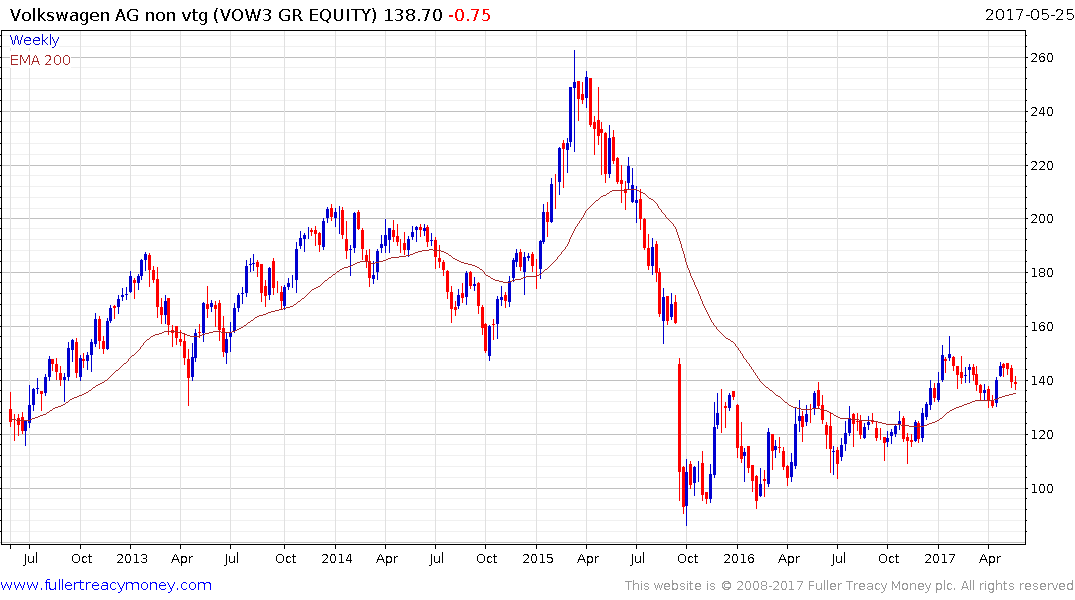
Volkswagen (Est P/E 5.8, DY 1.5%) has held a progression of higher reaction lows since hitting an accelerated low in late 2015 but will need to hold the region of the trend mean, which it is currently testing, if potential for higher to lateral ranging is to be given the benefit of the doubt.
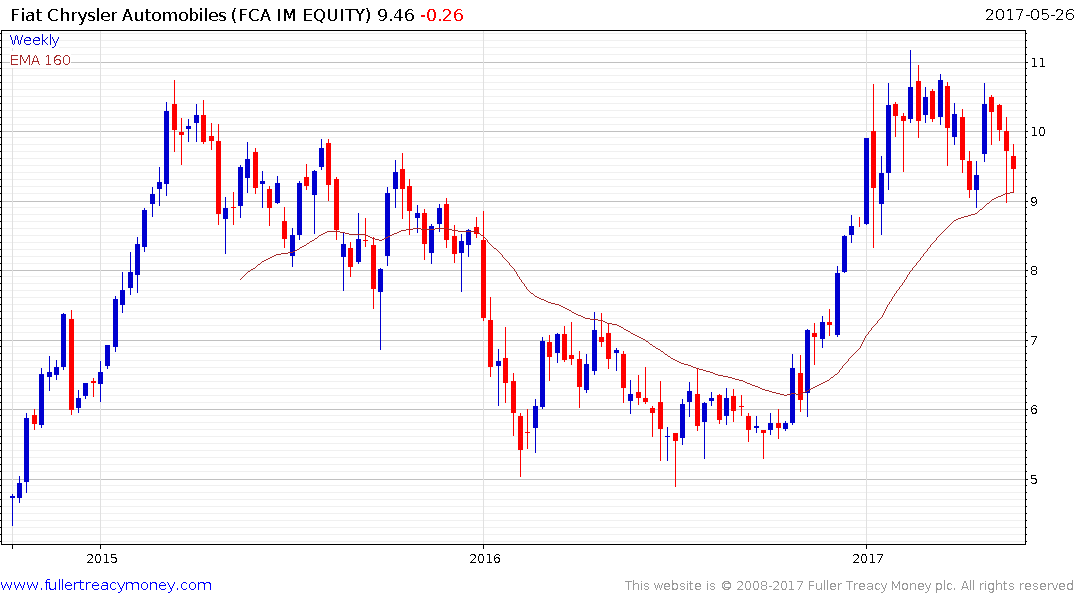
Fiat Chrysler (Est P/E 4.69 DY N/A) rallied impressively from September to test its post IPO high near €11 and has been consolidating for most of this year.
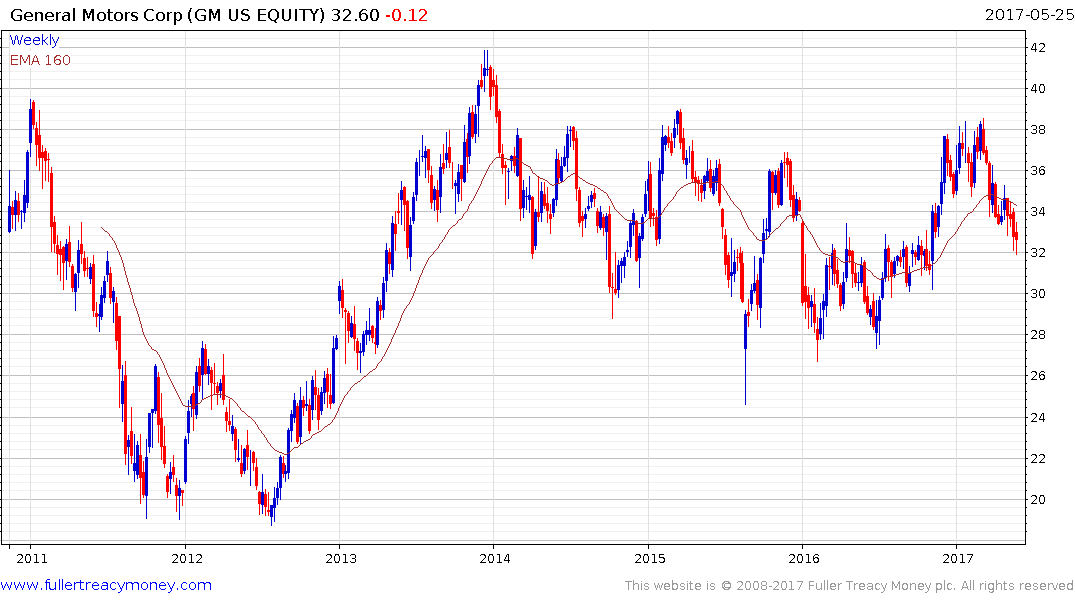
GM (Est P/E 5.42, DY 4.62%) encountered resistance in the region of the upper side of a three year range from March and is falling back towards the lower side at present. A break in the short-term progression of lower rally highs would be required to begin to check the slide.
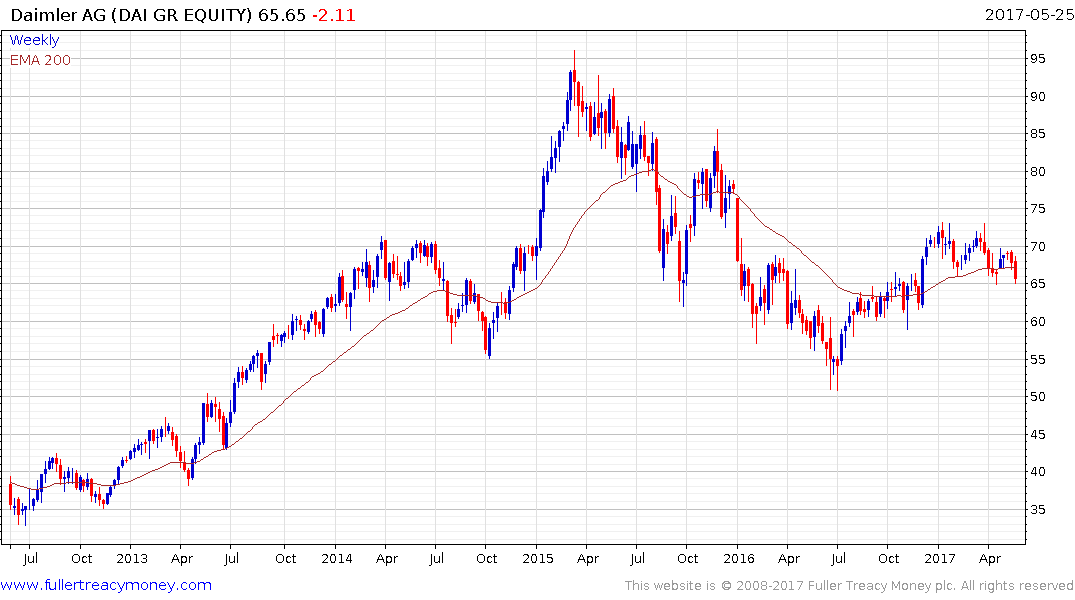
Daimler (Est P/E 7.21, DY 4.98%) broke below the trend mean this week and a clear upward dynamic would now be required to check potential for a further test of underlying trading.
The sector’s low valuations suggest investors are unwilling to give legacy car manufacturers the benefit of the doubt. That also represents opportunity because they have been written off as behind the curve on innovation. However, if the diesel cheating scandal tells us anything it is that Volkswagen and Bosch have a highly capable software team hidden away somewhere. If they can succeed in developing new product lines, they have ample scope to return to outperformance. That suggests the automotive sector is worth monitoring.
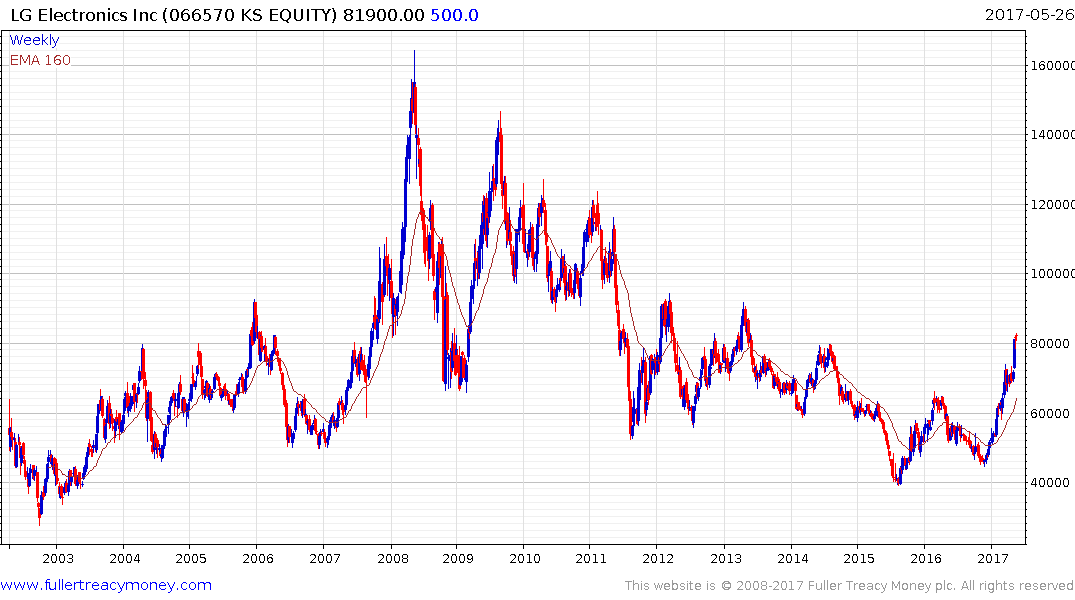
Also keep an eye on LG Electronics. It is a major supplier of infotainment and computer parts for the Chevy Bolt and its battery arm LG Chem is likely to become the third largest producer by 2020. The share rallied over the last couple of months to break a seven-year progression of lower rally highs.


